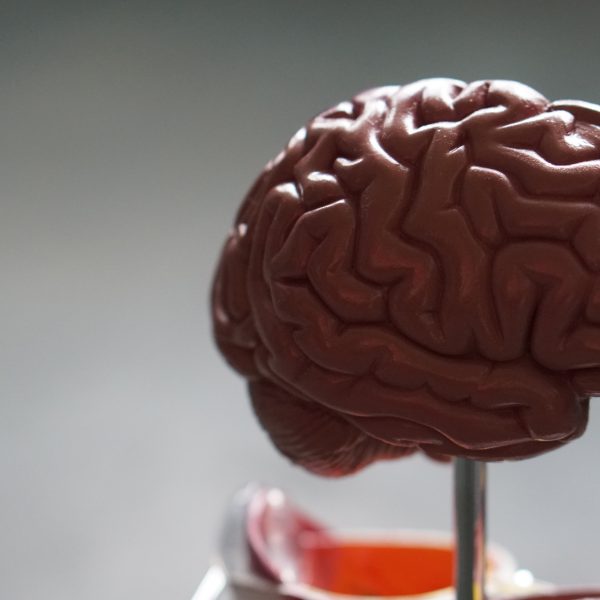So, you understand the brain … now what?

Every so often, a new field of scientific research reaches ‘cult’ status and is used to explain nearly every facet of life. Remember when string theory was the flavour-of-the-month and financial businesses scrambled to hire quantum physicists to gauge the stock market? How about when behavioural genetics was sexy and seemingly every behaviour, from humour to criminality, was mapped to the genome?
It is not that these connections are wrong – deep mathematics can certainly describe market patterns, and genes doubtless play a role in behaviour – but often we’re left wondering…now what? Knowing mechanistic underpinnings is well and good, but this tells us little about how to effect change.
Arguably, the current scientific ‘cult’ is neuroscience. It seems you can’t turn around without someone applying brain science to disparate fields: neurofinance for investing, neuroslimming for dieting, neuroleadership for businesses.
We believe that the neuro-hybrid with the greatest prospect is neuroeducation. Also known as educational neuroscience, it claims that knowledge of the brain can be applied to enhance teaching and learning practices in the classroom.
As before, there is nothing inherently wrong with this belief – there’s no doubt the brain plays a large role in our ability to learn and perform new skills. However, we are still left facing the question…now what? Just as knowing that the HAHA-1 gene variant leads to a sense of humour, alone it tells us nothing about what humour is, how to tell a joke, or why some things are so funny; so too knowledge of the brain alone tell us nothing about what good learning is, what good teaching is, or how to cultivate either.
THAT’S WHERE WE COME IN
For knowledge of the brain to have a meaningful impact on education, it must first be properly translated so we can apply information from one scientific field to another.
Luckily, this is one of the questions we set out to address in our newest book From the Laboratory to the Classroom: Translating Science of Learning for Teachers.
While there are several different types of translation, the form most sought after by education practitioners is termed prescriptive translation. This is the path by which information from one field can be used to guide actions, thoughts, and behaviours in a second field. Prescriptive translation seeks to answer the elusive ‘now what?’
PRESCRIPTIVE TRANSLATION EXPLAINED
To undertake effective prescriptive translation we must recognise the different levels of neuroeducation. At the base, we have the brain (neuroscience). Moving up, when we combine the brain with a body, we have the person (psychology). Finally, when we combine many people together, we have the social classroom (education).
As we rise up to each new level, novel properties and behaviours emerge that are not predictable or present in the preceding levels. For instance, behaviour, emotion, and the mind do not exist in the brain – rather, they emerge at the level of the person. Similarly, constructs like mirroring, observation, and interpersonal communication do not exist in the brain or the person – rather, they emerge at the level of the classroom.
To help clarify this idea, let’s shift our focus a bit and have a think about cars. If I were to ask you what the speed of a particular car engine is, what might you answer? In truth – car engines do not move; they simply sit there and churn about – as such, speed simply does not exist within a car engine. In order to generate speed, a car engine must be combined with a number of other structures (such as axles, wheel bases, tires). This means that speed is a unique property that emerges only when one reaches the level of car.
IN ACTION
Now, let’s use the example of ‘neuroplasticity’ to see how this works in education. The idea that brain neurons are continuously changing has been used to build an entire brain-based learning industry. However, simply knowing that the brain changes, does not offer any specific or meaningful tips for teachers or students. It doesn’t explain how to teach math or practice the piano, and it says nothing about communicating deep thoughts or ideas.
To make neuroplasticity useful, we must first walk it up to the level of the person (psychology) so we begin to learn how specific individual behaviours, thoughts, and emotions change the brain in specific ways.
We then need to translate these ideas up into the level of the social classroom (education). This is where we begin to see how process-based feedback, group work, peer to peer learning and other practices can be adapted to improve classroom teaching and learning.
SO NOW THEN…
What this means for educators is that although knowledge of the brain may generate novel concepts or theories to explain classroom behaviours, we should not be looking solely to neuroscience for prescriptive translation.
Specific strategies that enhance classroom learning and teaching practices will only meaningfully emerge in a useable form when translated up through the classroom. The next time someone tries to drive your practice by telling you how their new product impacts the brain, you can kindly ask for the evidence of prescriptive translation into the classroom.
In the end, when it come to the issue of ‘what now?’ teachers are a neuroeducators best friend!
Popular

Quality
Practice
Provider
Research
Workforce
Trauma-informed care at the heart of Connie Benn ELC’s VEYA winners success
2025-11-12 07:45:38
by Fiona Alston

Practice
Quality
Research
Workforce
Who should work with young children?
2025-11-07 07:30:45
by Fiona Alston

Quality
Practice
Research
Belonging, respect, remembrance: How ECEC supports young citizens
2025-11-11 07:30:52
by Fiona Alston
















